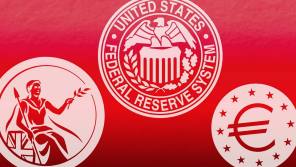

The growth in pension fund assets is strong across the world's riches nations, according to a new report, but this growth is not equal. According to the Organisation for Economic Co-operation and Development (OECD) – which has 35 member nations – assets in funded and private pension arrangements exceeded $38trn (£29trn) in members countries at the end of 2016, the highest level to date.
The organisation’s annual report on the state of pension systems in its 35 members showed assets rose to $38trn from $24.8trn in 2015.
But between 2015 and 2016, pension investments decreased by $400bn in the UK. Much was due to sterling devaluation, and in sterling terms the figure was stagnant at about £1.8bn.
According to the OECD report, Pensions Markets in Focus, the rise in pension fund assets has been put down to better rates of returns (some funds are achieving returns of9 per cent), but also as a result of increased contributions.
Looking at some economies, pension assets are growing faster than GDP. As such, the number of countries showing pension assets to GDP ratios above 100 per cent is rising. It is countries that historically have established pension systems or compulsion, such as the United States for the former and Australia for the latter, that show the largest pension assets to GDP ratios.
Denmark has the highest ratio: it is currently 209 per cent of GDP, due to a strong legacy of sustainable government and industry pension funds. The United States has a pension asset to GDP ratio of 135 per cent and Australia has 124 per cent.
The UK is not too far behind, with assets of 95 per cent of GDP, but if insurance contracts and assets are included, then the amount of pension savings for the UK would easily match the size of the economy.
The significance of making pension contributions is reiterated in the report, as it highlights slowing growth over the past decade. It highlights what had been slowing growth of pension assets in the past 10 years. Poland, for example, has only seen $1bn increase in pension investment since 2006 due to the reversal of a mandatory private pension system. In Hungary, the suspension of mandatory private individual accounts meant private pension assets are now $5bn, compared with $12bn in 2006.
The report begs questions over whether compulsion to save into pensions should be more widespread, including in the UK. Steve Webb, director of policy at Royal London, said: “Given very low auto-enrolment opt-outs, compulsion would make little difference to overall pension saving in the short term, especially with mandatory contributions only at 1 per cent.”
In terms of investment returns, it was European pension assets that saw thebest performance between 2015 and 2016. Armenian pension funds showed the highest return (9 per cent), followed by those in Poland, producing 8.3 per cent, and Ireland 8.1 per cent.
So where are these pension funds invested? The report said: “Pension plan assets in most countries are mainly invested in bills and bonds as these instruments are generally perceived as a safe source of income. Bills and bonds were the preferred instruments for direct investment by pension providers in 2016 in 18 out of 34 reporting OECD countries.”
Denmark, however, is different. It achieved returns in 2016 of 5.9 per cent, which the authorities put down to investments in equities, alternative investments and high-yield credit. Does this indicate the need to change the type of asset pension funds are investing in?
Mr Webb said: “The challenge with saying pension funds should invest more in return-seeking assets or riskier assets is that we are all getting older. More liabilities of pension schemes are now in respect of pensioners.”
The overall message from the report is that pension assets have largely recovered from the 2008 financial crisis; pension professionals must be hoping this investing trend will continue.
Melanie Tringham is features editor of Financial Adviser



